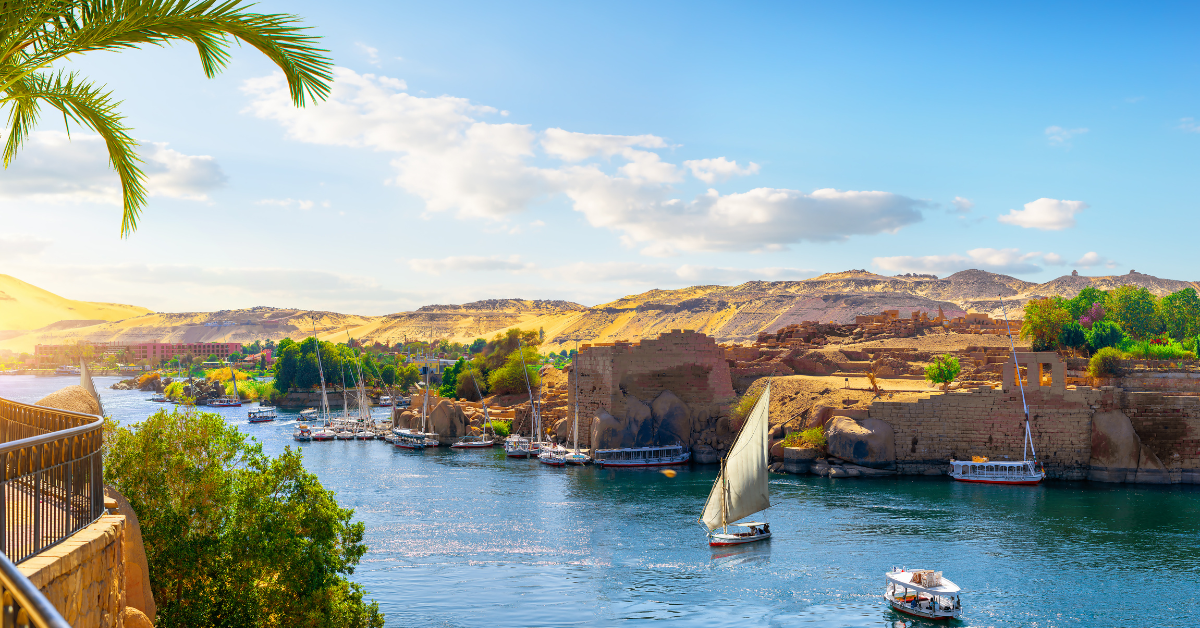Introduction
The River Nile, the world’s longest river, has been a vital waterway and life-giving force for the people living along its banks for millennia. Spanning over 4,100 miles through northeastern Africa, the Nile has played a crucial role in the rise and fall of civilizations, shaping the history, culture, and development of the region. This article takes a journey through the history of the Nile, exploring its influence on ancient Egypt, its connection to biblical events, and the lasting impact of its waters on modern society.
The Nile and Ancient Egypt: Sustaining a Civilization
The history of the Nile is deeply intertwined with that of ancient Egypt, as the river provided the foundation for the development of one of the world’s most remarkable civilizations. The annual inundation of the Nile deposited nutrient-rich silt along its banks, creating fertile land for agriculture and allowing the ancient Egyptians to develop a stable and prosperous society.
The Nile was not only a source of sustenance but also a means of transportation and communication for the Egyptians. Boats were used to transport people and goods along the river, connecting settlements and facilitating trade. The Nile also played a central role in ancient Egyptian religious beliefs and rituals, as it was associated with the god Hapi, who was responsible for the annual flood and the fertility it brought.
The Nile in Biblical Times
The River Nile features prominently in several biblical stories, highlighting its significance in the religious and historical narrative of the region. One of the most famous examples is the story of Moses, who, as an infant, was placed in a basket and set adrift in the Nile to escape the Pharaoh’s decree to kill all Hebrew male babies. The Nile was also the setting for the first of the ten plagues of Egypt, where the river’s waters were turned to blood.
The Nile During the Greco-Roman Period
Egypt’s strategic location and wealth attracted the attention of foreign powers, and the Nile played a key role in these conquests. Alexander the Great conquered Egypt in 332 BCE, establishing the city of Alexandria near the Nile Delta. The Nile served as a crucial supply route for the Greek rulers of Egypt, known as the Ptolemaic dynasty. Later, when Egypt became a Roman province in 30 BCE, the Nile continued to be a vital artery for the transport of grain, which was considered the “breadbasket” of the Roman Empire.
The Nile in Modern Times
The Nile continues to be an essential resource for the countries through which it flows, including Egypt, Sudan, and Ethiopia. Modern engineering projects, such as the Aswan High Dam in Egypt, harness the river’s power to generate electricity and control its annual flood, allowing for more extensive agricultural development and water management.
However, the Nile’s waters have also become a source of tension and conflict among the nations that share it. Issues related to water rights, dam construction, and resource management have led to diplomatic disputes, as each country seeks to secure its share of the Nile’s life-giving waters.
Conclusion
The River Nile has been an integral part of the history and development of the northeastern African region for thousands of years. From sustaining the ancient Egyptian civilization and shaping biblical narratives to its ongoing role as a crucial resource in modern times, the Nile’s waters have left an indelible mark on the lives of those who depend on it. As we journey through the history of the Nile, we gain a deeper appreciation for the river’s enduring legacy and the vital role it continues to play in shaping the future of the region.

